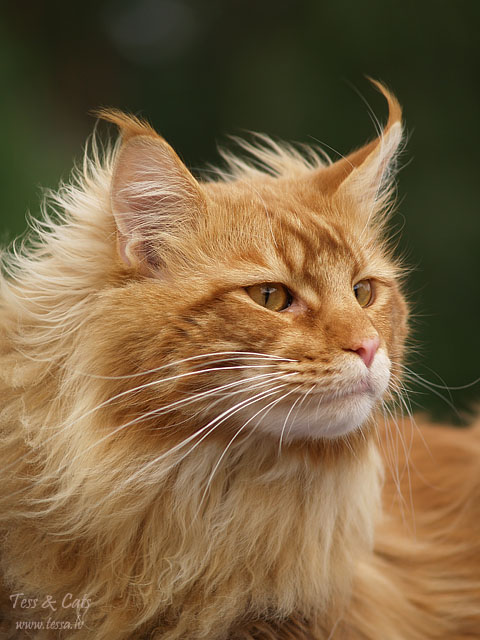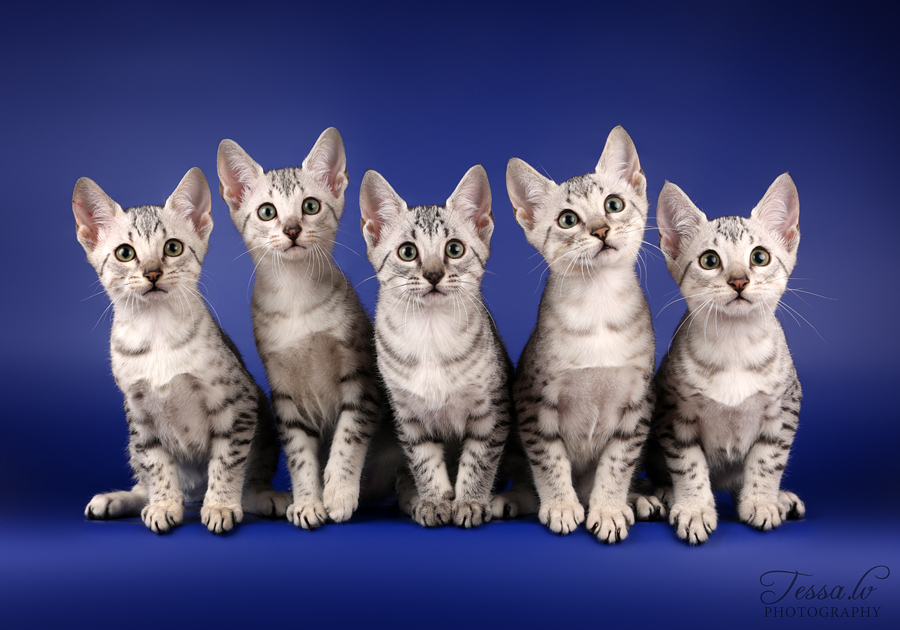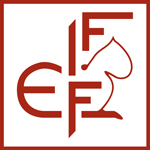
FIFe Health & Welfare Rules
On this page you can find the FIFe Health & Welfare Rules. These rules are incorporated in our Breeding & Registration Rules, Show Rules and General Part of the Breed Standards.
Navigate To
Breeding & Registration Rules
1. General
2. Husbandry & environment
2.1 General care
2.2 Accommodation
2.3 Re-homing of cats
2.4 Studs
2.5 Queens
3. Breeding conditions
3.1 General
3.2 Studs
3.3 Queens
3.4 Microchip
3.5 Genetic tests & diseases
3.6 Cats not allowed for breeding
Show Rules
Breeding & Registration Rules
1. General
The health and welfare of each individual cat or kitten must be the foremost concern for all breeders and owners of cats or kittens.
Responsible breeding based on genetic principles, disease prevention and an environment of love and comfort must be encouraged.
Accurate records regarding the health and breeding of cats and kittens must be kept.
2. Husbandry & environment
2.1 General care
Adult cats and kittens must have their vaccinations updated regularly.
Sick cats and kittens must receive veterinary attention as soon as possible.
Parasites such as fleas, ticks, mites, intestinal worms, heart worms etc., are sometimes unavoidable, but all cats must be regularly examined and treated.
Special measures must be taken for the prevention or spread of viral, bacterial and fungal diseases, including the use of vaccinations where available.
2.2 Accommodation
2.2.1 General conditions
Living accommodation, bedding, dishes, litter trays etc., must be kept clean at all times.
Cats must have water bowls with fresh water at all times, the right food when required or prescribed, comfortable bedding, play and activity items and climbing poles or similar.
Cats must have adequate space in which to move and play and should enjoy domestic living.
For cats unused to extreme temperatures, a range between 10º C to 35º C (50º F to 95º F) is acceptable but temperatures either below or above these averages necessitate either heating or cooling assistance.
Ventilation facilities are to be provided with fresh air (windows, doors, air conditioning) in order to minimise odours, moisture and drafts.
Natural and artificial lighting must be provided.
Cleaning and disinfecting facilities for floors, walls and furniture must be always available.
Although individual cats enjoy the company of other cats, overcrowding is to be avoided as this can lead to stress and aggression and, more importantly, can increase the risk of diseases.
Every cat or kitten must be given daily individual attention; this should include handling which allows for a check of the general health.
2.2.2 Separated accommodations
Where accommodation is separate from a domestic environment, facilities must be for the cat’s best management and maintenance.
Under these conditions:
- a minimum of 6 square meters of floor space with a height of at least 1.80 m per cat is required
- more than one level must exist and a sleeping and/or refuge area must be included
- all areas must be suitable for human access and weatherproof.
With outdoor facilities:
- cats must be provided with sufficient shade to give them protection from direct sunlight
- in these cases, cats must be allowed access inside in order to remain dry if it rains or snows
- areas must be constructed to facilitate easy drainage.
2.3 Re-homing of cats
2.3.1 Agreements
Any agreements or limitations with purchasers of kittens or users of stud cats must be in writing to avoid misunderstandings.
2.3.2 Pet shops or research facilities forbidden
It is not permitted to sell or hand over cats with FIFe pedigrees to pet shops or similar organisations nor for any experimental research or testing.
It is also not permitted for members of FIFe Member clubs to offer/trade cats or services, such as stud services, by auction or similar actions either on electronic or actual events.
2.3.3 Kittens
Kittens must not go to a new owner (home) before they are 14 weeks old and have been fully vaccinated against feline panleucopenia, feline calici virus and feline herpes virus, unless otherwise advised by a veterinarian.
All kittens must be identified by microchip and the identifying code shall be documented in or on the pedigree.
2.4 Studs
Stud cats, which have to live in enclosed accommodation, must have a minimum of six square metres of floor space with a minimum height of 1.80 m available to them; at least two square metres must be enclosed and weatherproof.
If this accommodation is shared, then the available surface must be larger.
In all accommodation there must be more than one level and a sleeping or refuge area must be included.
All areas must be suitable for human access.
2.5 Queens
All births must be attended in case problems occur.
Queens about to give birth or un-weaned kittens must have a separate area/room available.
3. Breeding conditions
3.1 General
All cats registered in a FIFe Pedigree book can be used for breeding unless restricted by:
- the Breeding & Registration Rules § 3, 6, 7, 8 or 9, or
- national rules with regard to health issues.
FIFe Members are not permitted to impose any further stricter breeding or registration limitations.
3.2 Studs
Before being used as a stud, a male cat shall have a veterinary certificate confirming that both testicles are normal and are descended into the scrotal sac.
A stud owned by a member of a FIFe Member may not be used for matings, which will result in unregistered kittens, i.e. for matings where the kittens will not receive an official pedigree from either a FIFe Member or a non- FIFe organisation.
3.3 Queens
Queens must not have more than two litters in twelve months with a maximum of three litters in twenty-four months except with the prior written approval of a veterinarian and/or the FIFe Member.
A queen which requires repeated caesarean sections must not be used for further breeding.
A queen may not be allowed to be mated by a second male within 3 weeks of the previous mating.
3.4 Microchip
Queens must not have more than two litters in twelve months with a maximum of three litters in twenty-four months except with the prior written approval of a veterinarian and/or the FIFe Member.
3.5 Genetic tests & diseases
3.5.1 Test programmes
Cats in breeds which bear a risk of genetic disease should be tested for such diseases when they satisfy the following criteria:
- the disease is fatal or causes chronic distress
- the disease occurs in a significant proportion of the breed
- a reliable test is available, and the disease could be eliminated
Each FIFe Member must develop appropriate programmes.
If tests are made mandatory, either by a programme established by the FIFe Member or by a breed specific entry in § 6 of the Breeding and Registration Rules, the FIFe Member must register the test results, based on laboratory documentation submitted by the breeder, and the test results must be indicated either on the pedigree itself on or a separate appendix to the pedigree.
Information on genetic diseases and advice on testing and health examinations will be researched and provided by the Health & Welfare Commission:
Commercially available genetic tests
Health examinations
The Health & Welfare Commission has the permission to update these lists when new information or tests are available.
The Health & Welfare Commission can help and advise the FIFe Members with information on genetic diseases and testing programmes.
3.5.2 Genetic diseases
The FIFe will not register or recognise any new breed of cats with breed characteristics based on phenotypic abnormalities or other congenital traits which give rise to health problems or impede the normal life of the cat.
The FIFe will not register or recognise any breed of cats showing as a breed characteristic:
- achondroplasia/pseudo-achondroplasia
an autosomal dominant gene resulting in dwarfism, shortened limbs and legs and other physical defects (for example the Munchkin) - osteochondrodysplasia:
an autosomal dominant gene causing progressive joint, bone and cartilage deformity (for example the Scottish Fold) - any other form of genetic mutation which results in a miniaturised cat or a foreshortening of the limbs of the cats.
The FIFe will not accept any new preliminary recognition applications for hairless varieties or partially hairless breeds, the current recognised breeds excepted.
3.6 Cats not allowed for breeding
The following cats are not allowed for breeding:
- deaf cats
- cats with an umbilical hernia
- cats without whiskers
- any type of “wild” cat or any new breed based on “wild” cats
- cats suffering from (pseudo-) achondroplasia or osteochondrodysplasia
- cats suffering from congenital abnormalities.
3.6.1 “Wild” cats and new breeds based on “wild” cats
FIFe will not recognise nor create EMS codes for:
- any type of “wild” cats
- any new breed based on “wild” cats.
FIFe will not recognise or accept any new breeds resulting from a mating between a domestic cat (felis catus) to a wild cat species or from a mating between a domestic cat (felis catus) to a hybrid cat (F1 – F4) out of a crossing with a wild cat species.
Such cats:
- are not allowed for breeding
- cannot be registered with FIFe
- cannot be exhibited at a FIFe show
- cannot be promoted or advertised.
3.6.2 Cats suffering from (pseudo-) achondroplasia or osteochondrodysplasia
FIFe will not recognise nor create EMS codes for:
- cats suffering from (pseudo-) achondroplasia: an autosomal dominant gene resulting in dwarfism, shortened limbs and legs and other physical defects (for example the Munchkin)
- cats suffering from osteochondrodysplasia: an autosomal dominant gene causing progressive joint, bone and cartilage deformity (for example the Scottish Fold).
Cats suffering from (pseudo-) achondroplasia or osteochondrodysplasia, or with such a cat in their ancestry:
- are not allowed for breeding
- cannot be registered with FIFe
- cannot be exhibited at a FIFe show
- cannot be promoted or advertised.
3.6.3 Cats suffering from congenital abnormalities
FIFe will not support or encourage breeding with cats suffering from congenital abnormalities, for example:
- hairless cats (except the current recognised breeds)
- cats with deformities of the feet or legs, for example polydactylism or oligodactylism (too many or too few toes)
- cats having other congenital disqualifying faults (→ General Part to the Standards).
Such cats:
- are not allowed for breeding
- cannot be sold as breeding cats; a breeder selling such a cat must send a request to their FIFe Member for a “breeding restriction” to be put on the pedigree
- cannot be promoted or advertised.
3.6.4 White cats
White cats must be tested for hearing before they are used for breeding.
Mating between two white cats is not allowed.

Show Rules
Veterinarian requirements
A veterinarian is present at the entrance to the show in order to examine the exhibits and can be reached during the entire show. At the show organising FIFe Member’s discretion, the veterinary examination can be performed either randomly or on all exhibits.
At shows arranged on two consecutive days by the same Member and if the show organisers so wish, those cats that are exhibited on both days need only go through the veterinary examination on the first day of the show.
Vaccinations
The cats must have been vaccinated against feline panleucopenia, feline calici virus and feline herpes virus, and have always had the required vaccinations and/or boosters, at least 15 days prior to the show. Vaccination against rabies is to be according to national legislation.
All vaccinations are to be performed by a veterinarian in accordance with the national veterinary legislation of the country where the cat is living. The period of validity for the vaccinations is marked by the veterinarian in the pet passport or on the vaccination certificate and must always be respected. FIFe Members may not impose stricter vaccination rules.
It is the exhibitor’s own responsibility to check the veterinary rules of the country where the show is held.
Admission to shows
Cats must have the tips of the nails cut before arrival at the show hall.
Not admitted to shows are:
- lactating queens
- pregnant queens
- dwarf cats
- de-clawed cats
- cats with deformities of the feet or legs (for example poly- or oligodactylism)
- blind cats
- deaf cats
- cats with docked tails
- cats with cropped ears
- unneutered house cats aged 12 months or older
- tattooed cats, except when having a tattoo with an identifying code as a form of registration.
It is forbidden to exhibit, promote or advertise:
- any type of “wild” cat or any breed based on “wild” cats
- cats suffering from (pseudo-) achondroplasia (such as Munchkin) or osteochondrodysplasia (such as Scottish Fold), or with such a cat in its ancestry.
Minimum age
The minimum age of a cat must be at least 4 months during the show.
This rule applies to International and National Shows, Seminars and Breed and Propaganda Shows.
Exhibiting kittens & juniors
Kittens and juniors shown in classes 12, 11 and 14 can only be shown during 2 consecutive weekends and must then have a break during the following weekend.
White cats
White cats must have a veterinary certificate stating that they are not deaf.
Symptoms of sickness
If during the vetting in or during the show the officiating veterinarian discovers that a cat shows symptoms of sickness (for example: viral, bacterial, fungal or parasitical), the cat in question, together with all other cats belonging to the same exhibitor, will be denied admission to the show hall resp. must be removed immediately from the show hall.
Show cages
It should be noted in particular that:
- it is prohibited to place cages on top of one another
- cages must be of sufficient size (minimum: 50 x 50 x 50 cm per cat), in order to ensure the comfort of the exhibit
- one cat per single cage a maximum of three cats per double cage (exceptions are made for litters)
- there must be a minimum of 1.25 m walking space for the visitors between the rows of cages
- in case of ring configuration of the cages, metal cages must have curtains safe and fully covering 2 sides of the cage, to protect the cat from other cats
- in case of back-to-back configuration, metal cages must have curtains fully covering at least 3 sides of the cage, to protect the cat from other cats
- food, water and a litterbox must be available to the cat at least 50% of the duration of the show day
- the bottom of the cage must be covered for the cat’s comfort
- the cat is provided the possibility of undisturbed rest for instance in the form of tent, shelter or an extra curtain.
Faults leading to disqualification and general faults in all breeds
Click here to download.
Ideal characteristics of the cat

General appearance
The cat should exhibit the typical characteristics of its breed and its general health and well being should be evident.
Physical condition
The cat should be in excellent physical condition and free from any anatomical and/or postural defects.
Skull
Should be gently rounded to a greater or lesser degree according to the size of the breed.
Jaw & bite
The ideal requirements for all breeds are level jaws and scissor bite. This is defined as upper and lower jaws of even length with a bite in which the outer surfaces of the top of the lower incisors just touch the inner surfaces of the tops of the upper incisors and canine teeth meet in a scissor-like position.
Jaws should be level with no distortions. Ideally all teeth should be present, of normal size, evenly positioned in the mouth, uncrowded within the dental arches and in correct alignment.
Nose
As defined according to the breed. Nostrils wide and open, allowing unrestricted passage of air.
Temperament
The cat should be receptive to the judging procedure and not apprehensive or aggressive.
Handling
The judge should be able to feel the size and shape of the underlying bone structure and the muscle tone and the basic conformation should be apparent.
Presentation
The cat should be well groomed, free from dust, dandruff and/or evidence of parasites.
Its paws should be completely clean with the tips removed from the claws.
In cats with areas of white hair the white should be clean and free from staining.
Grooming should enhance the qualities of the cat and its breed.
